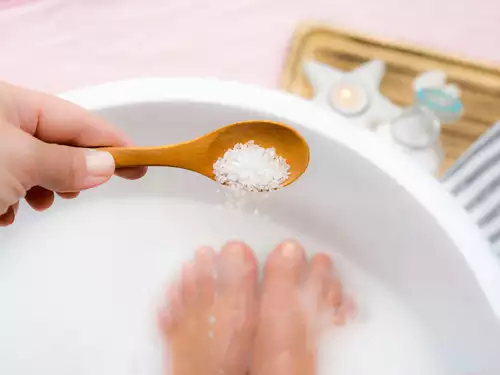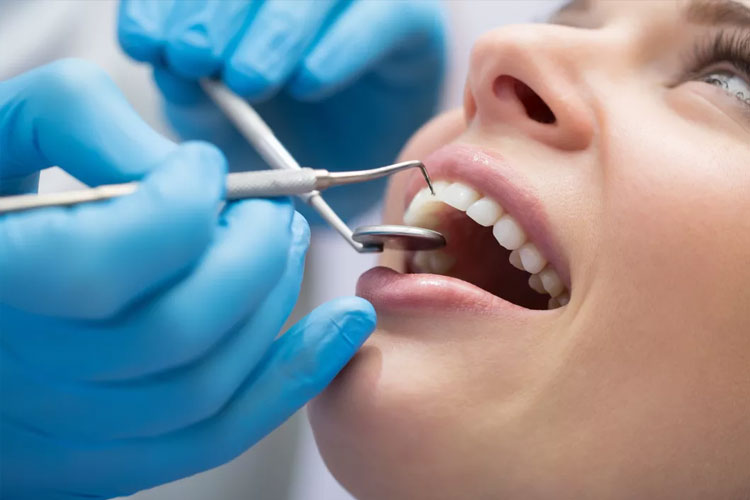Knee pain can be a common problem for people of all ages. Here are some home remedies that may help relieve knee pain:
Ice packs:
Applying ice packs to the affected area can help reduce swelling and numb the pain. Wrap ice in a towel and apply it to your knee for 15-20 minutes at a time, several times a day.
Ice packs are one of the best home remedies to get relief from knee pain. An ice pack helps reduce inflammation and numbs the pain in the affected area. It is an effective remedy for knee pain caused by injuries, arthritis, or overuse. Ice packs work by constricting blood vessels and reducing blood flow to the affected area, thereby reducing swelling and promoting healing.
To use an ice pack, wrap a cold gel pack or a bag of frozen peas in a towel and apply it to your knee for 15-20 minutes at a time several times a day. Make sure you do not apply the ice pack directly on your skin as it can cause frostbite. You can also make your own ice pack at home using crushed ice or frozen vegetables like corn or green beans wrapped in a cloth.
Ice packs are generally safe to use unless you have conditions such as Raynaud’s disease that makes you sensitive to cold temperatures. If you experience any adverse reactions such as severe pain, numbness, or skin irritation after using an ice pack, stop immediately and seek medical attention.
Heat therapy:
Applying heat to your knee can also help relieve pain. You can use a warm towel or heating pad to do this. Make sure to apply heat for no more than 20 minutes at a time.
Heat therapy is a fantastic way to relieve knee pain. Applying heat to the affected area can help reduce stiffness, soreness, and inflammation. The warmth from heat therapy increases blood flow and circulation, which helps bring oxygen and nutrients to the damaged tissue in your knee.
There are many ways to apply heat therapy at home. A hot water bottle or heating pad is an easy and affordable option that can be placed on the affected knee for 15-20 minutes at a time, several times throughout the day. Alternatively, you could try soaking in a warm bath or using a warm towel compress.
It’s important to note that while heat therapy can offer temporary relief from knee pain, it should not be used as a substitute for medical treatment if you have an underlying condition causing your discomfort. Be sure to consult with your doctor before starting any new treatment regimen for your knee pain.
Also Read: wellhealthorganic.com:10-benefits-of-eating-roasted-gram
Massage:
Massaging the affected area can help increase blood flow and reduce pain. Use gentle circular motions with your fingers to massage the area around your knee.
Massage is a great way to alleviate knee pain. Not only does massage increase blood circulation, but it also reduces stiffness and inflammation in the affected area. There are various types of massages that one can try, including Swedish massage, deep tissue massage, and trigger point therapy. It is important to consult with a licensed massage therapist to determine which type of massage is best suited for your individual needs.
Swedish massage involves long strokes and kneading of the muscles to promote relaxation throughout the body. Deep tissue massage focuses on reaching deeper layers of muscle tissue using slow strokes and deep pressure techniques. Trigger point therapy targets specific areas of muscle tension or knots (trigger points) through direct pressure applied by fingers or tools. Regular massages can help decrease knee pain over time as well as improve overall well-being.
Exercise:
Strengthening exercises for the knee can help reduce pain and improve flexibility. Try simple exercises like straight leg raises or wall squats to start.
Exercise is one of the most effective ways to manage knee pain. Simple exercises like walking and cycling can help to strengthen the muscles around the knee joint, reduce stiffness, and improve flexibility. These low-impact activities help to increase blood flow to the joints, which can help alleviate swelling and pain.
Another great form of exercise for those with knee pain is swimming. Swimming is a low-impact exercise that allows for a full range of motion without putting pressure on the joints. This makes it an excellent choice for individuals who are overweight or have arthritis.
It’s important to note that not all types of exercise are suitable for everyone with knee pain. High-impact activities like running and jumping may exacerbate the condition and cause further damage to the joint. It’s important to consult with a doctor or physical therapist before beginning any new exercise program if you have knee pain or any other medical conditions.
Turmeric:
Turmeric contains a compound called curcumin which has anti-inflammatory properties. Adding turmeric to your diet or taking supplements may help reduce knee pain.
Turmeric has been known for its anti-inflammatory properties and has been used as a natural remedy for knee pain. Its active ingredient, curcumin, has been studied extensively for its ability to reduce inflammation in the body. Curcumin works by inhibiting the production of enzymes that cause inflammation and by blocking the pathways that lead to inflammation.
Turmeric can be consumed in various forms such as adding it to meals or taken as a supplement. One popular way of consuming turmeric is by making turmeric tea. Simply boil water with turmeric powder, ginger and honey to create a soothing drink that can help relieve joint pain.
However, it is important to note that while turmeric may provide some relief from knee pain, it should not be considered a substitute for medical attention. If you are experiencing chronic knee pain, it is best to consult with your healthcare provider before starting any new treatment plan or supplement regimen.
Also Read: wellhealthorganic.com:easy-way-to-gain-weight-know-how-raisins-can-help-in-weight-gain
Ginger:
Ginger is another natural anti-inflammatory that may help reduce knee pain. You can add fresh ginger to your diet or drink ginger tea.
Ginger has been used as a natural remedy for various ailments for centuries. Its anti-inflammatory properties make it an ideal ingredient for treating knee pain. Ginger contains compounds called gingerols and shogaols that help reduce inflammation and relieve pain.
One way to use ginger to alleviate knee pain is by making a ginger tea. To make this tea, grate some fresh ginger root into a cup of hot water and let it steep for about 15 minutes. Add honey or lemon juice for taste if desired. Drink this tea at least three times a day to get relief from the pain.
Another way to use ginger is by applying it topically on the affected area. You can either use fresh grated ginger or buy a pre-made cream containing ginger extract. Gently massage the cream onto your knees twice daily until you feel relief from the pain. However, be careful not to apply too much pressure as this may cause more discomfort in the affected area.
Epsom salt:
Epsom salt contains magnesium, which can help reduce inflammation and relieve pain. Add Epsom salt to a warm bath and soak your knee for 15-20 minutes.
Epsom salt, also known as magnesium sulfate, has been used for centuries to relieve muscle pain and soreness. It is an effective remedy for knee pain caused by inflammation or injury. Epsom salt contains magnesium ions that help reduce swelling and inflammation in the knees. It also helps improve blood circulation in the area, which promotes healing.
To use Epsom salt for knee pain relief, add two cups of it to a warm bath and soak your knees for 20-30 minutes. You can also make a compress by mixing Epsom salt with hot water and applying it directly to the affected area with a cloth or towel. Make sure to rinse off any excess salt after using either method.
It is important to note that while Epsom salt can provide temporary relief from knee pain, it does not address the underlying cause of the pain. If you are experiencing chronic knee pain, it is best to consult with a healthcare professional before attempting any home remedies.
It’s important to note that these remedies may provide temporary relief and may not be a substitute for medical treatment if the pain persists or worsens. Consult with a healthcare professional for proper diagnosis and treatment of knee pain.
Conclusion
In conclusion, knee pain is a common problem that affects millions of people around the world. Fortunately, there are several home remedies that can help you find relief from this condition. These remedies include exercises to strengthen your muscles and improve flexibility, such as cycling or swimming.
Another effective remedy is to use ice or heat therapy to reduce inflammation and increase blood flow to the affected area. Additionally, maintaining a healthy weight through proper diet and exercise can also help alleviate knee pain.
It’s important to note that if your knee pain persists or gets worse over time, you should consult with a healthcare professional for proper diagnosis and treatment. With the right care and attention, you can manage your knee pain and get back to living your life without discomfort.
Also Read: wellhealthorganic.com:vitamin-e-health-benefits-and-nutritional-sources
FAQ
Sure, I can help with some frequently asked questions related to home remedies for knee pain:
Q. How long should I apply ice packs to my knee for pain relief?
A. You can apply an ice pack to your knee for 15-20 minutes at a time, several times a day. Avoid applying ice directly to the skin, wrap it in a towel or cloth before applying.
Q. Is it better to use heat or cold therapy for knee pain?
A. Both heat and cold therapy can be effective for knee pain relief. Cold therapy can help reduce swelling and numb the pain, while heat therapy can increase blood flow and provide relief. You can try both and see which one works best for you.
Q. Are there any foods that can help relieve knee pain?
A. Yes, some foods have anti-inflammatory properties and may help reduce knee pain, such as ginger, turmeric, salmon, nuts, and leafy green vegetables.
Q. Can exercise worsen knee pain?
A. It depends on the type of exercise and the severity of the knee pain. It’s important to start with gentle exercises and gradually increase intensity. Consult with a healthcare professional before starting any exercise program.
Are there any home remedies that can cure knee pain permanently?
Home remedies can provide temporary relief, but if the pain persists or worsens, it’s important to seek medical treatment. Knee pain can have various underlying causes, and a healthcare professional can diagnose and provide appropriate treatment for your condition.








